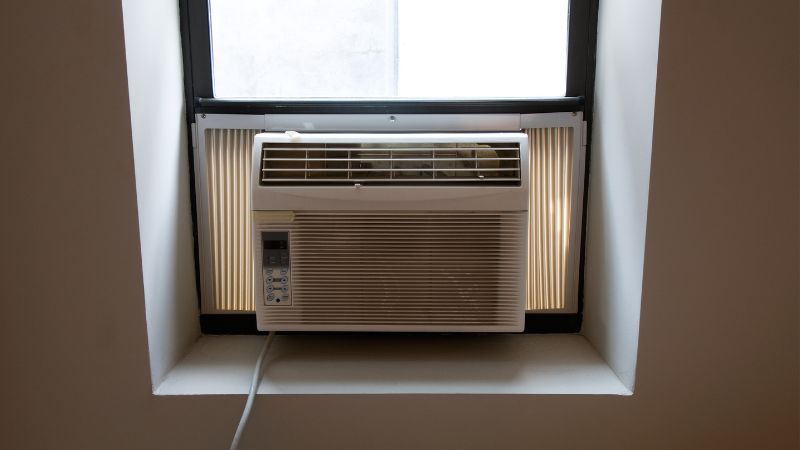How to remove and store your window air conditioner

As temperatures drop this fall, you may use your window air conditioner less frequently. In fact, you may consider taking it out for the season and reclaiming your view.
But, is it necessary to remove a window AC in the winter? We dive into removing, cleaning, and storing your window AC when summer’s over.

Do I need to remove my window air conditioner in the winter?
We recommend removing your window AC before the first frost of the year to protect it from the elements.
We suggest you stop using your window AC for cooling once the outdoor temperature reaches 62℉. Most window ACs can’t operate in temperatures below 62℉.
If you have a window unit that cools and heats, you can continue to use it in the winter. However, check the specifications for your particular system. Some may not operate in below-freezing temperatures.
If removing your window AC is impractical, we suggest you take weather-proofing measures to protect it from the winter weather. You should also insulate around the unit to keep the cold air out. (Instructions here.)
How to remove your window air conditioner
1. Ask a friend to help you – window ACs can be 80+ lbs.
2. Place a towel on the floor in front of the window. Water may drip from the condensation pan.
3. Unplug the air conditioner.
4. Remove any insulation or other material used to fill gaps around the unit.
5. Unscrew the unit from the window (if applicable).
6. Raise the window and begin to tip the unit forward, shimmying it out of the window.
7. Once the AC is out of the window, rest it upright on the floor.
8. Clean it and store it for the season.
How to clean your window air conditioner
1. Brush off dust, dirt, and debris like spiderwebs outside the AC.
2. Remove the filter. If it’s disposable, throw it away and replace it. If it’s reusable, wash it.
3. Wash a reusable filter by running it under the faucet and lightly scrubbing it with a cleaning brush. Let it air dry.
4. Unscrew the metal cover behind the front body grill of the unit.
5. Affix a brush attachment to your vacuum. Gently vacuum the inside and outside, including the interior coils. If you don’t have a brush attachment, use a damp cloth.
6. When all parts are clean and dry, screw the cover back on.
Use extra precautions if you need to clean mold from your window AC.
How to store your window AC for winter
Once your window AC is clean, pack it away into a box. Ideally, you’ve saved the box and foam padding it came in. If not, use an appropriately sized box. Secure your AC inside with old towels or packing material.
Most of us don’t have room to store an air conditioner box inside our homes. If you do, awesome! Find a safe place for it, and don’t pile heavy items on top. If not, store it in your garage, basement, or covered shed till the weather heats up again.
Make sure your AC stays upright while it’s in storage.
Winterizing your window air conditioner
If you can’t remove your window AC, do what you can to prepare it for the winter.
We recommend shielding your AC in a cover like this one. If that doesn’t work for you, purchase plastic sheeting and duct tape to wrap the outdoor portion of the unit.
Inside, cover your AC and window to ensure cold air isn’t sneaking in through any gaps. Consider using weatherstripping or other insulating material.
Unplug the system and do not use it when it’s covered.
Will rain damage a window air conditioner?
Rain will not damage your window AC. You can continue to operate it in wet weather. However, you may consider removing it during hurricanes or other powerful storms.
Will snow damage a window air conditioner?
Snow may damage your window AC. If it’s allowed to build up, snow can become heavy. This may cause parts to bend and warp.
Snow can also freeze the unit, causing cracks to the external casing and inner components like the condenser coils.
We don’t recommend running your window AC in snowy conditions – unless its manufacturer designed it to heat in temperatures below freezing. Check your user’s manual for specifics.
If you’re in the market for a new window AC, check out our top picks for the best window air conditioners of the year.